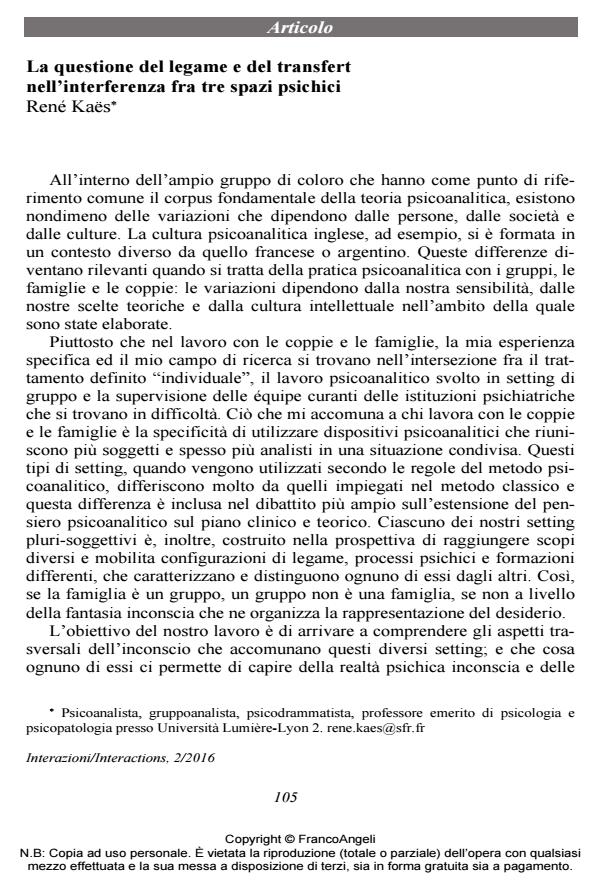The issue of link and of transference within three interacting psychic spaces
Journal title INTERAZIONI
Author/s René Kaes
Publishing Year 2016 Issue 2016/2
Language Italian Pages 13 P. 105-117 File size 196 KB
DOI 10.3280/INT2016-002010
DOI is like a bar code for intellectual property: to have more infomation
click here
Below, you can see the article first page
If you want to buy this article in PDF format, you can do it, following the instructions to buy download credits

FrancoAngeli is member of Publishers International Linking Association, Inc (PILA), a not-for-profit association which run the CrossRef service enabling links to and from online scholarly content.
The article presents an overview of the author’s research, which focuses on the articulation between individual psychoanalytic treatment, psychoanalytic work in group settings, and listening to health care teams that are in difficulty within psychiatric institutions. It aims principally to contribute to the understanding of specific and intersecting aspects of unconscious psychic reality in all these arenas. Having outlined the nature of psychoanalytic work in group settings, the author presents his main hypothesis: in groups there is not only one space of psychic reality (that of the group as a whole), but three. The first is that of "the singular subject in the group"; the second is that of "intersubjective links" that subjects contract when they meet with an other or more than one other in the group; the third is that of "the ensemble" that the subjects develop and of which they are part, because they shape and are shaped by it. Furthermore, the author presents the theoretical and clinical models that he has formulated in addition to their corresponding concepts: in particular the models of the group psychic apparatus, the internal group and psychic "groupality". The elements that form the theory of the link, which was based on the specificity of transference, and the concept of unconscious alliances are described.
Keywords: Psychoanalytic group theory, group psychic apparatus, interfering psychic spaces, psychic "groupality", internal group, unconscious alliances, specificity of transference.
René Kaes, La questione del legame e del transfert nell’interferenza fra tre spazi psichici in "INTERAZIONI" 2/2016, pp 105-117, DOI: 10.3280/INT2016-002010